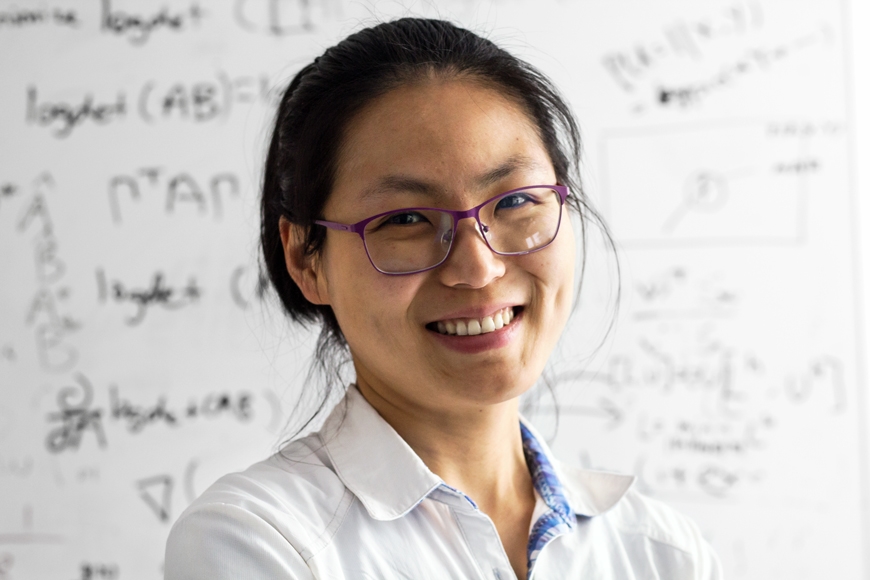Faculty Spotlight: Assistant Professor Lan Liu
Assistant professor Lan Liu didn’t always know she wanted to be a statistics professor. Born and raised in Shanghai, Liu majored in mathematics at the University of Science and Technology in China. After graduation, she knew she wanted to come to the United States to further her education.
It was by chance that she became involved with statistics, applying to the biostatistics PhD program at the University of North Carolina, Chapel Hill (UNC) for the fun of it. “I wasn’t planning to get my degree in biostatistics until UNC admitted me,” Liu says. The biostatistics program was the only program she applied to that wasn’t pure math.
“Math is more like a game of numbers; you focus on the conditions and details,” Liu says. “In biostatistics, the problem usually comes from real life.” While attending UNC, Liu became involved with many different research areas involving public health data, seeing up close the real-world implications statistics has. After completion of her PhD program, Liu worked on post-doctoral research at Harvard.
Infectious Diseases & Life Before Academia
Through her advisor at UNC, Liu had the opportunity to work on research projects involving infectious diseases. “Our research specialized in HIV, and I mainly worked on method development,” Liu says. She used statistical methods to carry out causal inference and see how different drugs affect it.
In 2012, before going to Harvard, Liu interned with the FDA in Washington, DC. Here she worked on developing statistical methods to judge the efficacy of a drug on arthritis. “My experience was very unique because I’d never worked with the government before,” Liu says. “My research was more policy-driven.”
At Harvard, Liu’s work focused more on the causal inference method development when the treatment is not perfectly randomized. “This research is very important for the medical and pharmaceutical industries,” Liu says. Determining a drug’s effectiveness is imperative to fighting the spread of diseases.
After her research at Harvard, Liu decided to return to academia. “Originally, I wanted to see what people outside of education were doing,” Liu says. “But then I realized in the university community, you get exposed to other fields and problems.” Being able to conduct real-world research to solve real-world problems was important to Liu, and she found those opportunities here at the University of Minnesota.
Life In Academia
Fast forward to today, Liu is in her third year here in Minnesota. Besides the cold, she has nothing but praise for the University and the faculty she works with. “People are so friendly here, and I love how departments are so open to collaboration with one another,” Liu says. Besides the strong faculty and department, Liu was attracted to Minnesota because of its renowned programs such as biostatistics, epidemiology, psychology, and radiology.
Since being here, Liu has had the opportunity to continue her research on causal inference as well as conduct some consulting for businesses in the Twin Cities. “Consulting was a very different experience to me because I was able to take my knowledge outside of the academic bubble,” Liu says. Along with Professor Galin Jones, she consulted for a Minnetonka financial company that works with small- to mid-sized businesses. They were tasked with developing a statistical model to evaluate customers’ credit. “It’s important for statisticians to do this type of work because it gets you even closer to the real world,” Liu says.
When asked why she chose academia, Liu instantly responds with “the students.” “The students are young, energetic, and passionate to learn,” she says. “Sometimes I learn from them too.”
This story was written by an undergraduate student in CLA.



